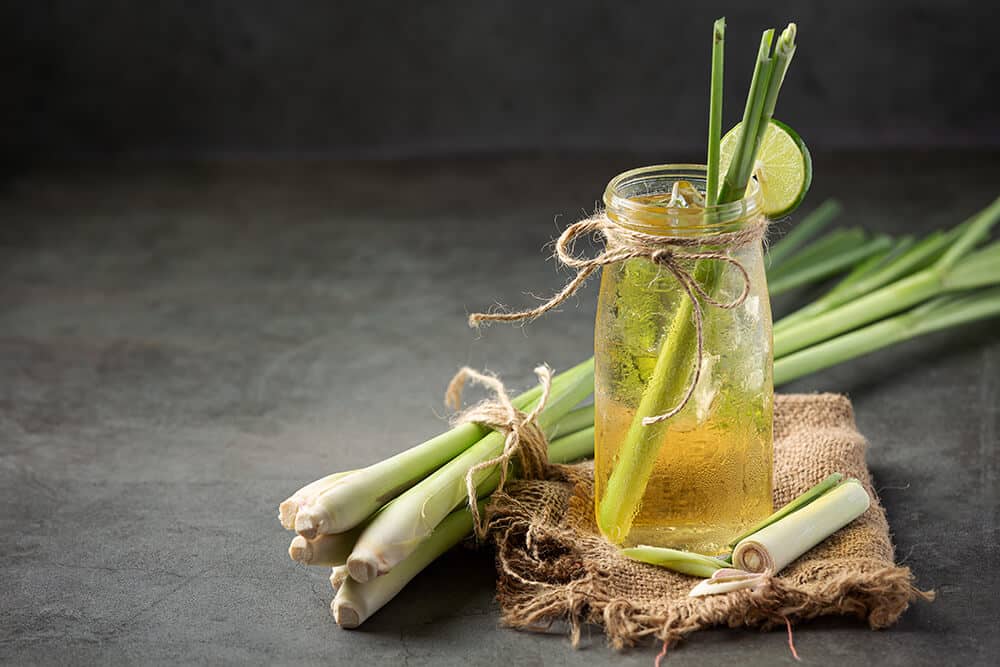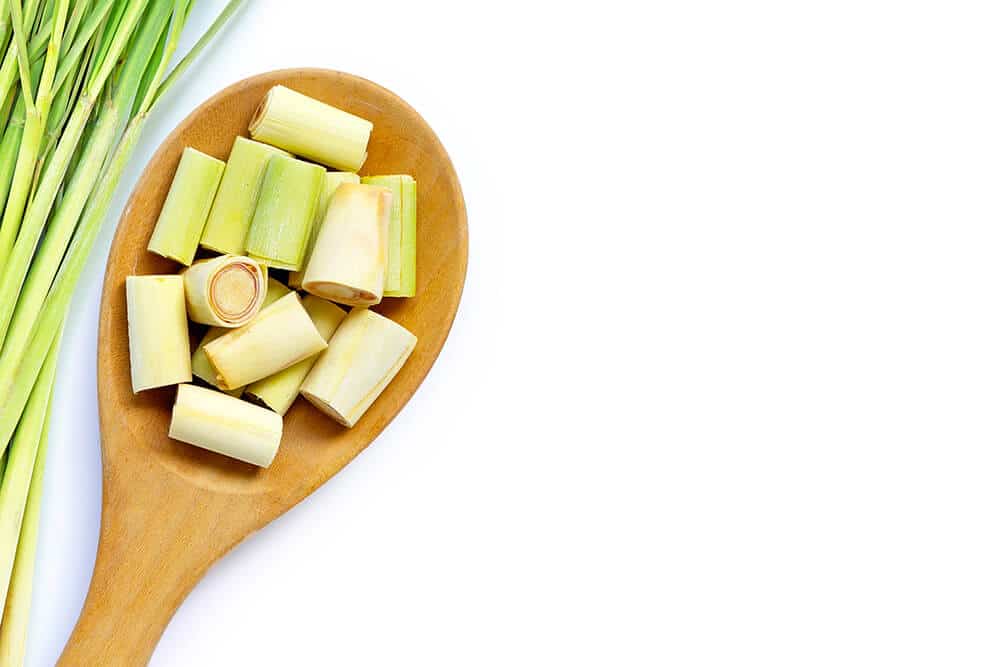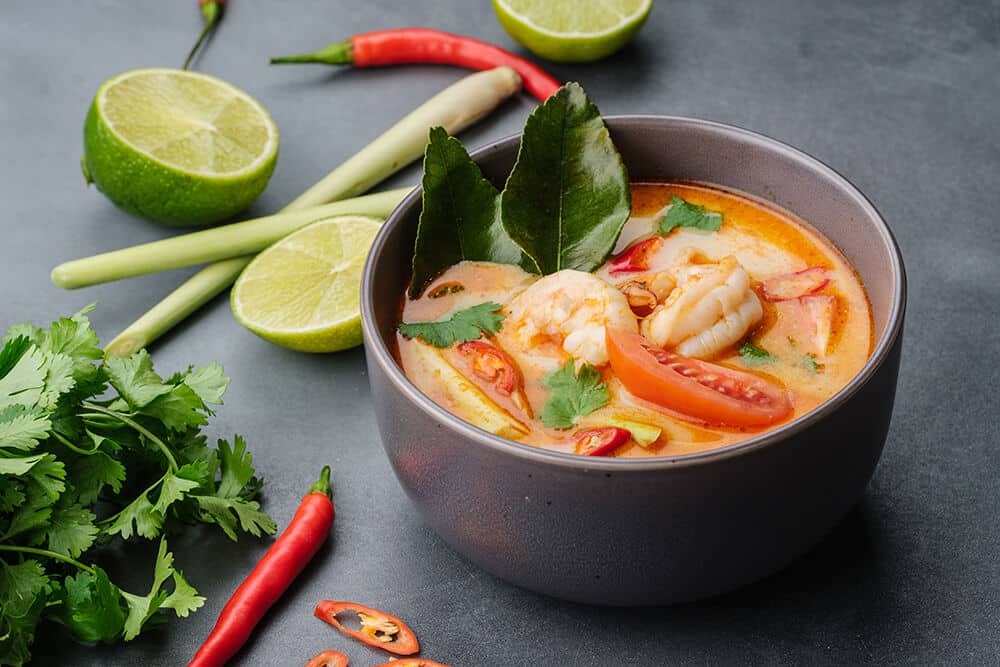Lemongrass In Thai Cooking
Lemongrass in Thai cooking is like curry leaves in Indian cooking—they go hand in hand. Lemongrass, a tall, aromatic perennial grass, is a staple in many Southeast Asian cuisines, especially Thai cooking. Known for its citrusy aroma and flavor, lemongrass adds a refreshing zest to dishes.
In Thai cooking, the lower part or stalk of lemongrass is typically used. This stalk gets chopped up finely and infuses flavor into soups, marinades, curries, and other classic Thai dishes.
So how does lemongrass in Thai cooking feature? Everywhere! Lemongrass adds a delicious tanginess to curry pastes as well as fish, poultry, beef, and seafood dishes. Besides being a versatile cooking ingredient, it can also be used to make steaming hot cups of refreshing and warming herbal tea.
Lemongrass is a sub-tropical plant that thrives in a full-sun environment. If you have a green thumb, you can even try growing your own lemongrass. Although the plant flourishes in warm and sunny conditions, in colder environments you can grow it in a pot indoors.
Table of Contents

Why Lemongrass Is Healthy
This light and aromatic herb is also nutrient-dense. Beyond its wonderful kitchen use, there are many good reasons to include lemongrass in your diet.
- Vitamin A: Essential for maintaining healthy vision, skin, and immune function.
- Vitamin C: An antioxidant that supports the immune system, aids in iron absorption, and promotes healthy skin.
- Folate: Crucial for DNA synthesis and repair and essential for pregnant women to support fetal development.
- Magnesium: Great for muscle and nerve function, blood sugar control, and bone health.
- Zinc: Key for immune function and wound healing.
- Copper: Helps form red blood cells and maintain nerve cells and the immune system.
- Iron: Essential for the production of hemoglobin, which carries oxygen in the blood.
- Potassium: Helps maintain proper heart and muscle function.
- Phosphorus: Important for forming bones and teeth and involved in the body’s energy production.
- Calcium: Crucial for healthy bones and teeth, muscle function, and nerve signaling.
- Manganese: Necessary for bone formation, blood clotting, and reducing inflammation.
Lemongrass also boasts antioxidant, antimicrobial, and anti-inflammatory properties, making it a beneficial addition to a healthy diet by protecting cells from damage, fighting infections, and reducing inflammation.
The Role of Lemongrass in Thai Cooking
Fresh lemongrass is a key part of Thai cuisine. This pretty grass infuses dishes with its unique, lemony fragrance and subtle sweetness.
It is a critical ingredient in Thai curry pastes, including green, red, and yellow. In green curry paste lemongrass blends green chilies, garlic, and herbs to create a vibrant, herbaceous taste profile.
Red curry paste combines lemongrass with red chilies for a spicier kick. In contrast, with its milder heat, yellow curry paste integrates lemongrass alongside turmeric and cumin, offering a more complex and earthy taste.
How to Use Lemongrass in Thai Cooking
When cooking with lemongrass, preparing it properly to extract its full flavor is important.
The outer leaves are usually rigid and should be removed, revealing the tender, aromatic inner stalk. The base of the stalk is the most delicious part.
It can be finely chopped, pounded into a paste, or sliced into large pieces for infusing soups and stews.
To release the oils, bruising the stalk with the back of a knife is a classic step.
Besides being a key ingredient in Thai curry paste, lemongrass is commonly added to marinades, stir-fries, broths and soups. It provides a bright, zesty note that complements the bold flavors of Thai cuisine
Storing Lemongrass and Other Tips
To maintain the freshness and flavor of lemongrass, proper storage is important.
Here are some tips for storing lemongrass:
- Refrigeration: Fresh lemongrass can be wrapped in a damp paper towel and placed in a plastic bag. Store it in the vegetable crisper drawer of your refrigerator, where it can stay fresh for up to two weeks.
- Freezing: Lemongrass can be frozen for longer storage. Clean and trim the stalks, then slice them into smaller pieces or keep them whole. Place the pieces in an airtight container or a freezer bag, removing as much air as possible. Frozen lemongrass retains its flavor for up to six months.
- Drying: Dried lemongrass is another option, though it may lose some of its vibrant flavor. Cut the stalks into thin slices and allow them to air dry completely. Store the dried lemongrass in an airtight container in a cool, dark place.

Tips for Working with Lemongrass
Handling lemongrass correctly can boost the flavor and ensure it melds well into your dishes.
Here are some tips for working with lemongrass:
- Peeling:
Remove the tough outer leaves until you reach the tender inner stalks. - Bruising:
To release the essential oils and enhance the flavor, bruise the lemongrass by gently crushing the stalk with the back of a knife or a rolling pin. - Chopping:
For recipes that require chopped lemongrass, finely slice the inner stalk. - Infusing:
When making soups or broths, cut the lemongrass into larger pieces and bruise it. - Blending:
In curry pastes or sauces, lemongrass is blended with other ingredients to create a smooth, aromatic paste.
By storing lemongrass properly and following these tips, you can maximize its flavor!

Other Ways to Use Lemongrass
Besides its pivotal role in curry pastes, lemongrass shines in other classic Thai dishes.
It is a key ingredient in Tom Yum soup, where its citrusy notes pair perfectly with the spiciness of chili and the bright lime.
In Tom Kha Gai, a coconut milk-based chicken soup, lemongrass adds a fresh balance to the creamy, rich broth.
Beyond savory dishes, lemongrass makes a delightful herbal tea renowned for its calming effects and digestive benefits. Simply steeping fresh or dried lemongrass in hot water creates a fragrant, soothing beverage that can be enjoyed hot or iced.
We hope this guide to lemongrass in Thai cooking gives you the confidence to use it more often in Thai dishes. If you’re craving a curry, the good news is that Nittaya Curry Paste already includes a perfect balance of ingredients for a delicious home made Thai curry any time. Find out more about our product range.



